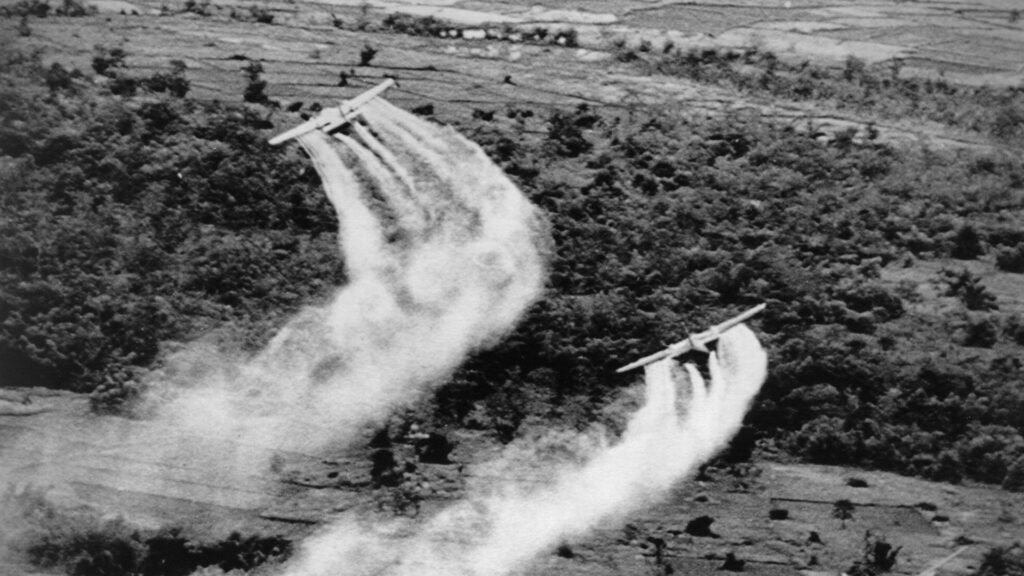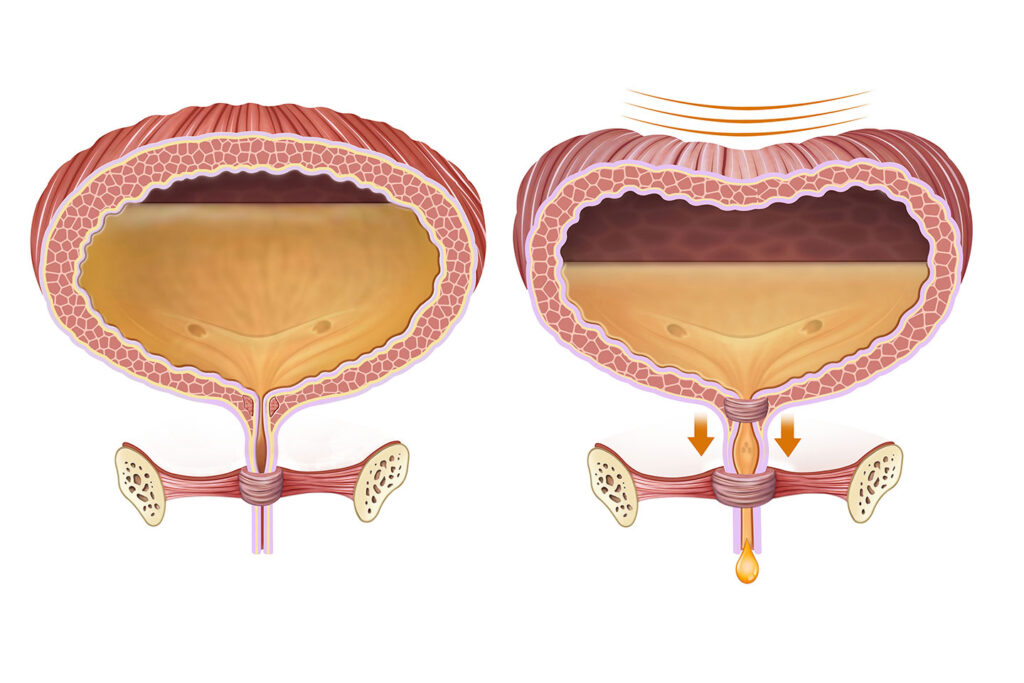You’ve served your country, but now you’re back home with a new battle to fight—prostate conditions. It’s not just the physical toll; it’s the maze of paperwork for VA Disability Ratings for Prostate Conditions.
You might know a bit about VA disability benefits, yet there’s much more beneath the surface. We’ll dive into what makes prostate cancer a unique contender in the realm of veterans’ health claims and how burn pits from days past can haunt today’s well-being.
By sticking around, you’ll grab hold of crucial insights like navigating service connections and why that C&P exam isn’t as daunting as it seems. So let me guide you through these choppy waters—you don’t have to sail them alone.
VA Disability Ratings for Prostate Conditions Explained

Understanding the VA disability ratings for prostate conditions can be as complex as trying to explain why your GPS takes you on a wild goose chase when there’s clearly a better route. But fear not, because just like finding that hidden shortcut, we’re here to guide you through this maze.
Navigating the VA Rating System

Trying to figure out how the VA rates medical conditions is like trying to score points in a game with ever-changing rules. You might know about Agent Orange exposure and its connection with prostate cancer—a nasty parting gift from military service during Vietnam War or other specific locations. This link is so strong that Agent Orange has earned itself an infamous spot on the list of presumptive conditions.

But let’s throw another curveball into this: burn pits. These toxic barbecues were common in places like Iraq and Afghanistan, creating smoke filled with chemical compounds no one should breathe in—let alone roast marshmallows over—and have been linked to adverse health effects including prostate issues later down the line.

Veterans exposed may find themselves dealing with more than just frequent urination; they could face urinary incontinence or erectile dysfunction too (because apparently surviving combat wasn’t challenging enough). And guess what? The VA rates these kinds of fun side-effects anywhere between 10 and 60 percent depending on their severity—so make sure those details don’t slip through during evaluation.
Establishing Service Connection for Prostate Health Issues

Achieving direct service connection feels somewhat akin to hitting all green lights when you’re already late—it’s rare but oh-so-satisfying. Whether it’s due directly or secondarily to military service, linking your condition back is crucial. We’re talking about situations where something else caused by your time serving leads down a path straight towards our good friend—the enlarged prostate gland—or worse yet, cancer.
You’ll need solid evidence showing either herbicide agent orange cuddled up close enough during service years ago leading now to a diagnosis of prostatic hyperplasia or maybe some other unfortunate circumstances tying everything together neatly in front of Veterans Law judges who get their kicks dissecting every piece presented before them (seriously though—we respect their thoroughness).
Burn Pit Exposure Risks

Talking about risks associated with burn pit exposure is kind of like discussing whether eating expired yogurt was worth the risk. You might dodge a bullet, or you could end up feeling pretty rough. Just like that questionable yogurt, breathing in toxic fumes from burn pits can have some serious health consequences down the line.
Key Takeaway:
Wrapping your head around VA disability ratings for prostate issues can feel like playing a game with ever-changing rules. From Agent Orange exposure to burn pit fumes, proving these conditions are linked to service is key—and could impact your rating from 10 to 60 percent.
Hitting all green lights on the way to establishing direct service connection for prostate health issues is rare but rewarding. Solid evidence and thoroughness will be your best allies in front of Veterans Law judges when it comes down to linking Agent Orange or other exposures directly back to military service.
Burn pit risks? It’s a gamble—like eating expired yogurt. Breathing in those toxic fumes might leave you dealing with serious health consequences later, much like taking that risky bite.
Establishing Service Connection for Prostate Health Issues
Veterans often face the challenge of linking prostate health issues to their military service when filing VA disability claims. Knowing how to establish that vital connection can be the difference between a successful claim and one that falls short.
Agent Orange Exposure and Presumptive Conditions

Many veterans who served in Vietnam or other areas where Agent Orange was used may not realize this herbicide’s link with prostate cancer. If you’ve got boots-on-the-ground history from the Vietnam War, there’s a strong chance your prostate cancer is already seen as a presumptive condition by the VA. This means they acknowledge that certain diseases, like prostate cancer linked to Agent Orange exposure, are connected to service without you having to prove it directly—talk about cutting through red tape.
Bear in mind though, even if agent orange exposure seems clear-cut, each veteran’s case is unique because everyone’s body marches to its own drumbeat. So make sure all your i’s are dotted with medical evidence before marching into battle against paperwork.
Burn Pit Exposure Risks

If smoke plumes from burn pits were part of your daily scenery during service, it could play an unexpected role in current health battles—especially those involving the prostate gland. It might seem like connecting burn pit exposure risks with something specific like frequent urination or voiding dysfunction is stretching things thinner than mess hall gravy but think again. Burn pits released chemical compounds into airways which may now have adverse health effects years down the line—and we’re just beginning to understand how deep these go.
Frequent run-ins at 0300 hours with urinary urgency aren’t just annoying; they could signal larger problems tied back to those infamous pits. As veterans law continues evolving alongside medical understanding of these exposures’ long-term impacts on vets’ well-being—including conditions connected beyond just respiratory ones—the door opens wider for more secondary service connections being recognized.
Navigating Secondary Connections Related To Prostate Disorders

You know firsthand: what happens in Vegas—or rather inside our bodies—doesn’t always stay compartmentalized. That’s why many vets find themselves grappling not only with primary concerns like enlarged prostates (benign prostatic hyperplasia) but also fun side quests such as erectile dysfunction and absorbent materials becoming close personal friends thanks (but no thanks) to urinary incontinence. Secondary connections can form an alliance stronger than any superhero team-up if your primary condition shakes hands with another issue caused by it—in this scenario, due credit goes towards the interconnected nature of health issues that remind us how complex our systems really are.
Key Takeaway:
Linking prostate issues to military service is key for VA claims—think Agent Orange for Vietnam vets. But, remember each case differs and needs solid medical proof. Burn pit exposure might also affect your prostate health, opening doors to secondary service connections like urinary problems or erectile dysfunction.
Secondary Health Concerns Tied to Prostate Disorders
Veterans who’ve tangoed with prostate conditions often find themselves in a bit of a dance-off with secondary health issues. These concerns can waltz right into their lives, and they’re more than just minor annoyances—they can significantly affect quality of life.
Erectile Dysfunction and Prostate Conditions

The relationship between erectile dysfunction (ED) and prostate conditions is kind of like having your favorite song come on the radio only to realize it’s full of static—frustrating, right? For many veterans facing the aftermath of treatments for prostate cancer or dealing with an enlarged prostate, ED becomes an uninvited guest at the party. It’s not just about intimacy; this condition has real emotional and psychological effects that shouldn’t be brushed under the rug.
Talking frankly about what’s happening below deck might feel awkward but trust me—it’s essential. Whether you’re looking at treatments suggested by the American Cancer Society, or exploring other options, knowing how VA rates these interconnected issues could make all the difference in getting proper help from disability benefits.
Urinary Incontinence and Prostate Conditions

Say goodbye to sneezing without consequences once urinary incontinence enters stage left as a result of primary prostate disorders such as benign prostatic hyperplasia or after certain treatments for prostate cancer VA claims. It might start out feeling like an occasional drip when you laugh too hard but can escalate into needing absorbent materials daily—which isn’t exactly something anyone had on their bucket list.
If frequent trips to John are part your routine now because holding it is no longer an option—that’s something VA recognizes. The disability rating for those unexpected leaks ranges anywhere from 10% if it’s just mildly annoying up to 60% if you need absorbent materials around-the-clock (thanks Agent Orange exposure.). And yes, every percentage point counts when we’re talking about va disability benefits here.
Voiding Dysfunction and Prostate Conditions

Moving onto another headliner: voiding dysfunction—isn’t that a glamorous term? This covers any difficulty starting urination—or maintaining flow long enough so you don’t have do-si-do back five minutes later. And this brings us right back to our military friends, who often face such challenges due to their strenuous lifestyles and the stressors they encounter in service.
Key Takeaway:
Prostate issues can lead to other serious problems like ED and urinary incontinence, which impact both your physical and emotional well-being. But don’t sweat it—VA ratings recognize these secondary conditions, so you might be eligible for benefits that help you cope better.
What to Expect During Your C&P Exam for Prostatic Diseases
you’re about to step into your Compensation and Pension (C&P) exam room, ready to discuss the nitty-gritty of your prostate condition. This is more than just a check-up; it’s part of how the VA determines if what you experienced during service has left its mark.
The Prep Before The Step

You’ve probably heard that preparation is key, right? Well, when it comes to medical evaluations for prostate conditions, that saying holds water—or in this case—holds potential disability benefits. Bring any relevant medical records or test results with you. They’re like gold when proving how military service impacted your health.
If Agent Orange plays a villain in your story or burn pits were part of your deployment backdrop, mention them. The link between these exposures and certain health conditions can be strong enough to sway the course of an evaluation. If frequent urination or worse troubles plague you since serving our country—and they’re connected—that’s something the examiner needs on their radar.
Diving Deeper Than Surface Level

Your examiner isn’t just there as a formality—they want details. How often does urinary incontinence disrupt your day? Can erectile dysfunction claim credit for lost moments? They need facts because every symptom ticks a box towards defining voiding dysfunction severity which affects VA rates prostate cancer. So speak up.
This might feel like oversharing but trust me—it’s essential information that could affect whether agent orange exposure tips scales toward presumptive service connection criteria being met.
Facing Facts With Stats

We know numbers tell tales worth telling so here’s one: About 1 in 8 men will face down prostate cancer at some point in their lifetime—no small odds by any stretch. And should those stats become personal reality post-service then understanding how active versus inactive statuses impact ratings becomes crucial knowledge weaponry while navigating disability claims labyrinthine paths.
- Absorbent materials may have been daily companions once upon time due adverse health effects stemming from enlarged prostates benignly named ‘benign prostatic hyperplasia’ yet hold significant weight within walls where VA rating decisions are made;
- Erectile dysfunction often walks hand-in-hand with aforementioned urinary issues becoming secondary concerns deserving attention spotlight too;
- Vietnam War veterans need careful monitoring because they might have been exposed to Agent Orange. This exposure could be causing new cancer cases even decades later, which may lead to presumptive conditions for their healthcare coverage.
Key Takeaway:
Step into your C&P exam ready to detail how service affected your prostate health. Bring medical records—they’re crucial. Mention any exposure to Agent Orange or burn pits, and don’t shy away from discussing symptoms like frequent urination or erectile dysfunction; they all count towards your VA disability rating.
Numbers matter: 1 in 8 men may get prostate cancer, which impacts VA ratings—know the difference between active and inactive statuses. If you have issues like urinary incontinence or erectile dysfunction linked to service, speak up—they can sway the decision on your claim.
Vietnam vets should highlight any Agent Orange exposure as it could lead to conditions presumed connected by the VA long after service.
How the VA Handles Active vs. Inactive Prostate Cancer Claims
Understanding how the VA rates prostate cancer, especially when distinguishing between active and inactive status, is like navigating a tricky hiking trail—knowing the right path can lead to rewarding views or in this case, benefits that you’ve rightfully earned.
Active Prostate Cancer: The 100% Rating Phase

The moment a veteran’s diagnosis of prostate cancer hits their medical records, it triggers what might be called an automatic ‘benefits alarm’ within the VA system. This isn’t just any old bell ringing—it’s more like a siren announcing that they’re now eligible for a temporary 100% disability rating. Think of it as the full-coverage health insurance plan kicking in because your condition demands immediate attention.
This high level of support from Uncle Sam reflects both recognition and respect for what you’re going through. But remember, active doesn’t mean forever. Once treatment ends and if your doctors report no signs of cancer lingering—or it becomes “inactive”—the plot twists.
Inactive Status: Adjusting Ratings Like Thermostat Settings

Moving on to post-treatment life means new challenges but also possible reductions in those vaunted 100 percent ratings—the term “inactive” starts echoing through hallways at the Department of Veterans Affairs (VA). Here’s where things get nuanced; ratings are adjusted based on residual effects left behind by treatments or surgery for prostate cancer caused by military service.
We’re talking about issues such as erectile dysfunction (a topic few want to shout from rooftops yet impacts many warriors-in-armour post-battle with prostate malignancies), urinary incontinence (more common than most would think), voiding dysfunction (frequent urination) which have their own range under VA guidelines—a sliding scale ranging anywhere from 10 up to 60 percent depending on severity.
Ratings Post-Cancer Treatment: Beyond Just Numbers

Beyond these specific symptoms lies another layer—secondary conditions connected directly with your primary ailment could also qualify you for additional compensation via secondary service connection claims—a process akin to linking dots back to one’s time spent serving our nation under less-than-ideal environmental conditions including exposure hazards like Agent Orange during Vietnam War times or burn pits used across recent conflict zones around Middle East regions today).
If you were exposed to herbicides like Agent Orange during service and later develop conditions such as benign prostatic hyperplasia or more serious related health issues, it’s important to understand your options. Seeking the right medical attention is crucial, and you may also be entitled to certain benefits due to your exposure. Make sure you explore all available resources and support systems designed for veterans.
Key Takeaway:
When prostate cancer hits, the VA gives a temp 100% rating—it’s like full-blown health insurance kicking in. But once you beat it and the cancer’s “inactive,” your rating can change. Think sliding scale based on lasting issues—anything from trouble peeing to more serious stuff.
Got side effects or other conditions tied to your service? You might score extra compensation for that too, especially if things like Agent Orange are part of your past. Make sure you get checked out and chase down those benefits you deserve.
FAQs in Relation to Va Disability Ratings for Prostate Conditions
1. When does prostate cancer become total and permanent for VA compensation?
Prostate cancer is rated 100% during active treatment; it can be considered total and permanent if residuals, after treatment, prevent substantial work.
2. Can you get disability for prostate problems?
Absolutely. If your prostate issues stem from or worsened by service, the VA might grant you disability benefits.
3. What is the VA rating for frequent urination?
The VA rates frequent urination based on severity – mild cases score lower while severe ones disrupting daily life rate higher.
4. What is the VA disability rate for erectile dysfunction?
Erectile dysfunction often secures a 0% rating but grants special monthly compensation if it’s severe enough to disrupt daily activities.
Conclusion
Now you’ve got the lay of the land for VA disability ratings for prostate conditions. You’ve seen how a 100% rating reflects treatment intensity and learned that Agent Orange can trigger automatic benefits.
Remember, your service connection is key—whether direct or secondary. Burn pits exposure? That could be a factor too. The C&P exam’s just another step on this journey, not an obstacle to fear.
Dive into those environmental exposures; they might unlock presumptive service connections. Grasp these threads and pull—the support and compensation you earned are within reach.
VA disability ratings for prostate conditions aren’t just numbers; they’re recognition of your sacrifice. So take this knowledge, stand firm in your claim, and let it guide you toward the benefits deservedly yours.


